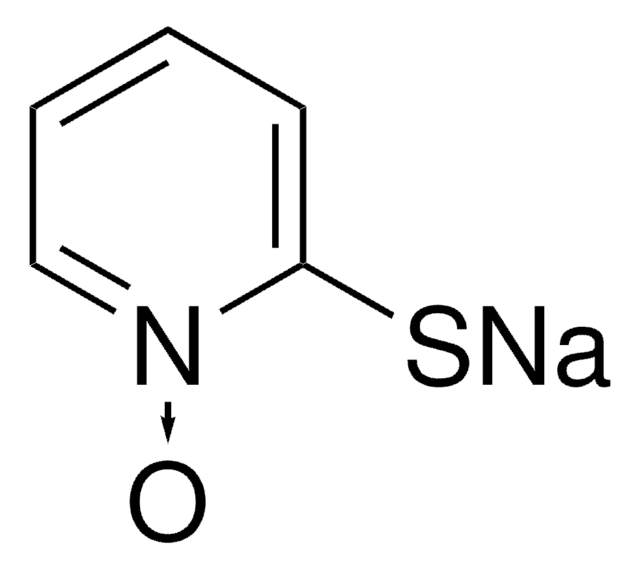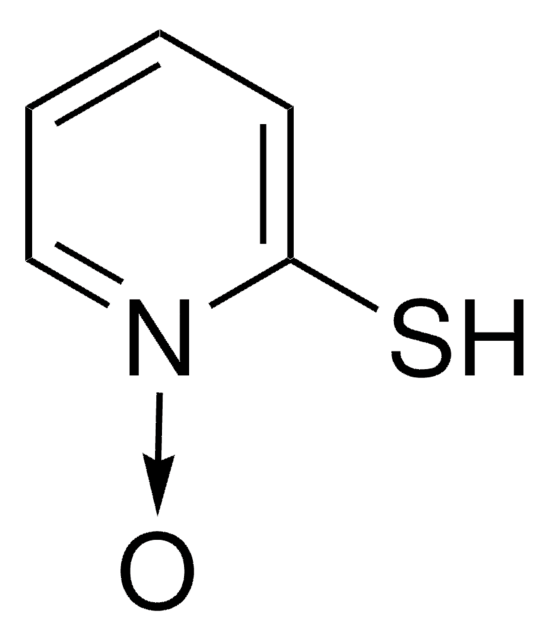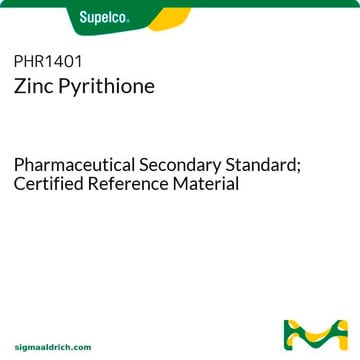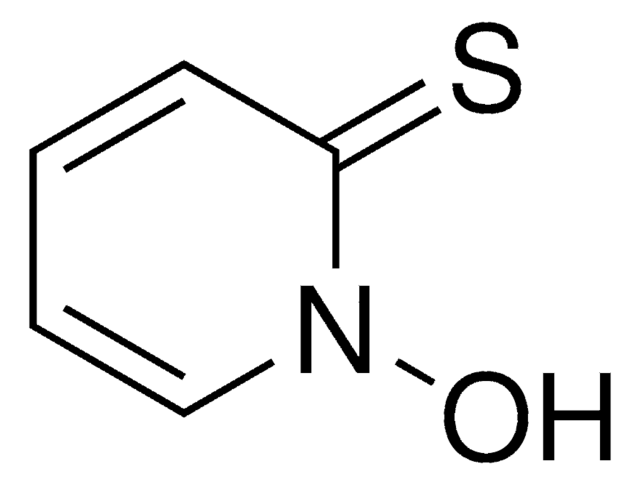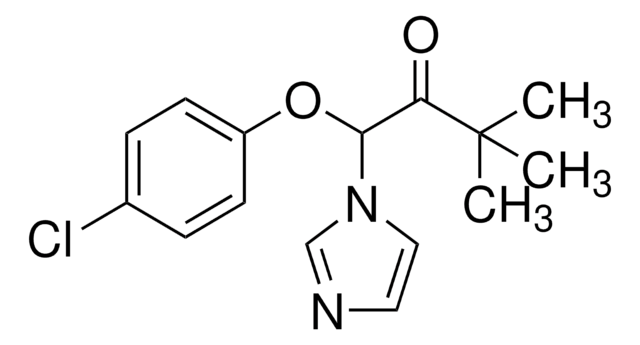H6377
1-Hydroxypyridine-2-thione zinc salt
≥95%
Synonym(s):
Mercaptopyridine N-oxide zinc salt, Pyrithione
About This Item
Recommended Products
assay
≥95%
SMILES string
O1N2C=CC=CC2=[S][Zn]13ON4C=CC=CC4=[S]3
InChI
1S/2C5H5NOS.Zn/c2*7-6-4-2-1-3-5(6)8;/h2*1-4,8H;/q;;+2/p-2
InChI key
OTPSWLRZXRHDNX-UHFFFAOYSA-L
Looking for similar products? Visit Product Comparison Guide
Related Categories
Application
- Antimicrobial nanocoatings: The compound 1-Hydroxypyridine-2-thione zinc salt was evaluated for its efficacy in antimicrobial nanocoatings, showcasing its role in enhancing the performance of such coatings used in healthcare and industrial environments to prevent microbial contamination (Molling et al., 2014).
signalword
Danger
Hazard Classifications
Acute Tox. 2 Inhalation - Acute Tox. 3 Oral - Aquatic Acute 1 - Aquatic Chronic 1 - Eye Dam. 1 - Repr. 1B - STOT RE 1
Storage Class
6.1A - Combustible acute toxic Cat. 1 and 2 / very toxic hazardous materials
wgk_germany
WGK 3
ppe
Eyeshields, Faceshields, Gloves, type P3 (EN 143) respirator cartridges
Certificates of Analysis (COA)
Search for Certificates of Analysis (COA) by entering the products Lot/Batch Number. Lot and Batch Numbers can be found on a product’s label following the words ‘Lot’ or ‘Batch’.
Already Own This Product?
Find documentation for the products that you have recently purchased in the Document Library.
Customers Also Viewed
Our team of scientists has experience in all areas of research including Life Science, Material Science, Chemical Synthesis, Chromatography, Analytical and many others.
Contact Technical Service